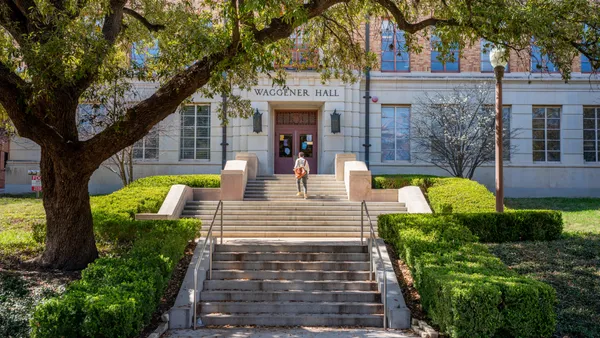Dive Brief:
-
More than three-quarters of college chief online officers believe their institutions' online undergraduate enrollment will increase as a result of switching to remote learning during the pandemic.
-
The sixth Changing Landscape of Online Education report surveyed 422 chief online officers about how their colleges adapted to the health crisis during the fall term and how their attitudes toward online education have shifted. Nearly nine in 10 respondents said online learning is a greater priority for their schools than before the pandemic.
-
The survey suggests the move to remote learning in 2020 will bring lasting changes to higher education, including the adoption of more online courses and programs.
Dive Insight:
The CHLOE report typically captures trends in online education, but the sixth installment also asked college officials about how their institutions were impacted by the pandemic and how they expect the move to remote learning will affect their institutions long-term.
The survey found more than 80% of colleges used online classes in fall 2020. Some schools that started out with in-person learning during the term switched to remote education in response to coronavirus outbreaks.
Almost two-third of institutions gave additional resources to support online learning in 2020 compared to the prior year. Three-quarters of that group said their institutions invested in technology hardware and software licenses. Other top areas included hiring support staff and funding online exam proctoring.
Around 18%, however, had reductions in support. That group most commonly said their budgets were reduced for instructors and online support staff.
Two-thirds of officials said their institutions charge the same rates for online and in-person learning. An equal share of respondents, 14%, said they charge either less or more for online education than face-to-face programs.
However, trends in tuition pricing varied by sector. Private four-year colleges were the least likely to charge the same rates for different modalities, with one-third charging less for their online offerings. Community colleges were the most likely to price these options the same, with 80% doing so.
The majority of colleges that priced their online programs less than in-person offerings pointed to a competitive market and that there was no cost for campus activities and facilities as reasons. Those that charged more highlighted the cost of launching and maintaining online programs.















